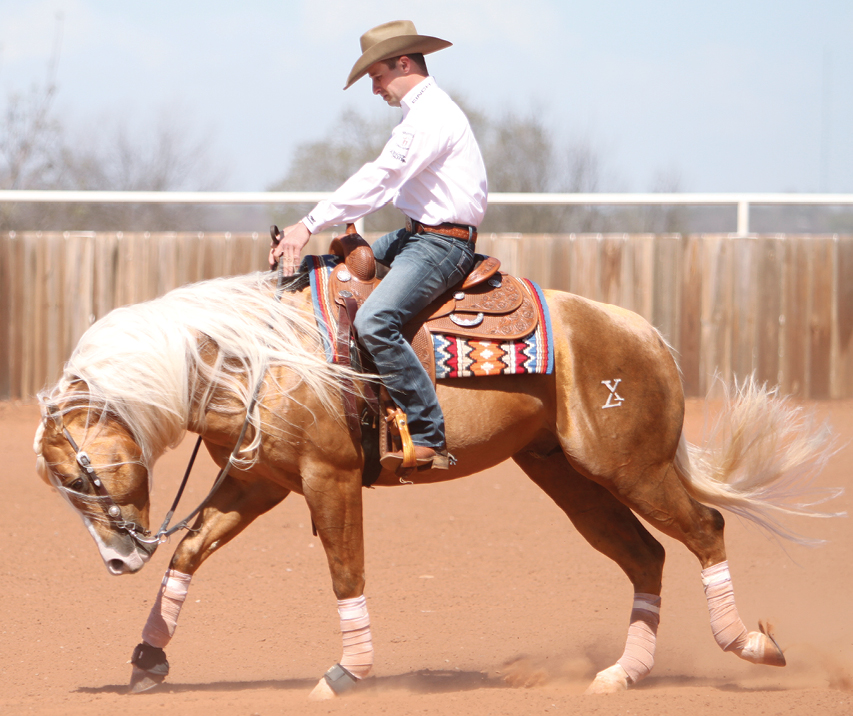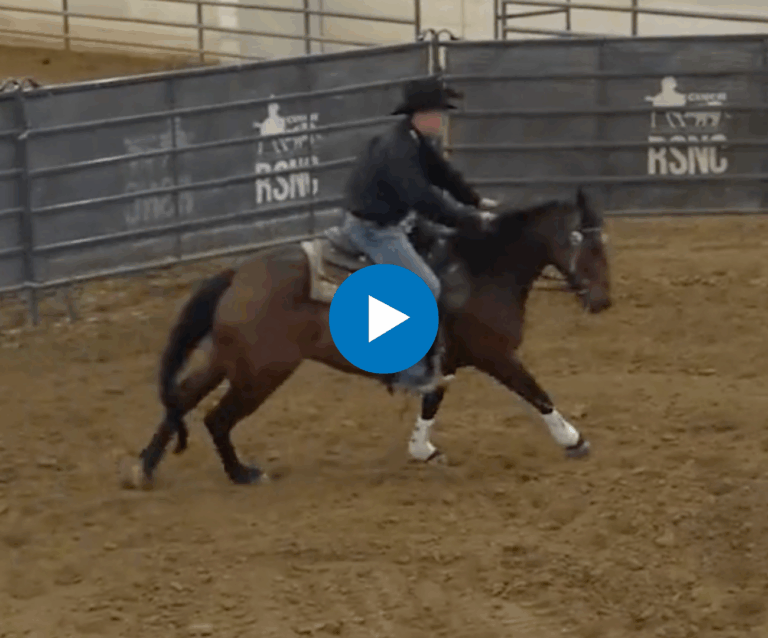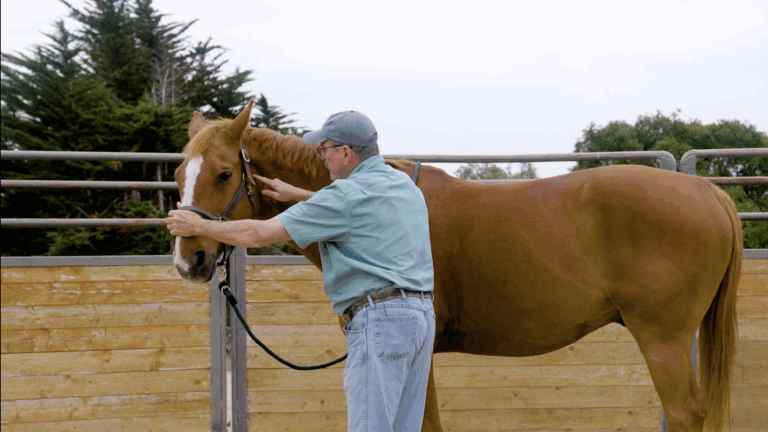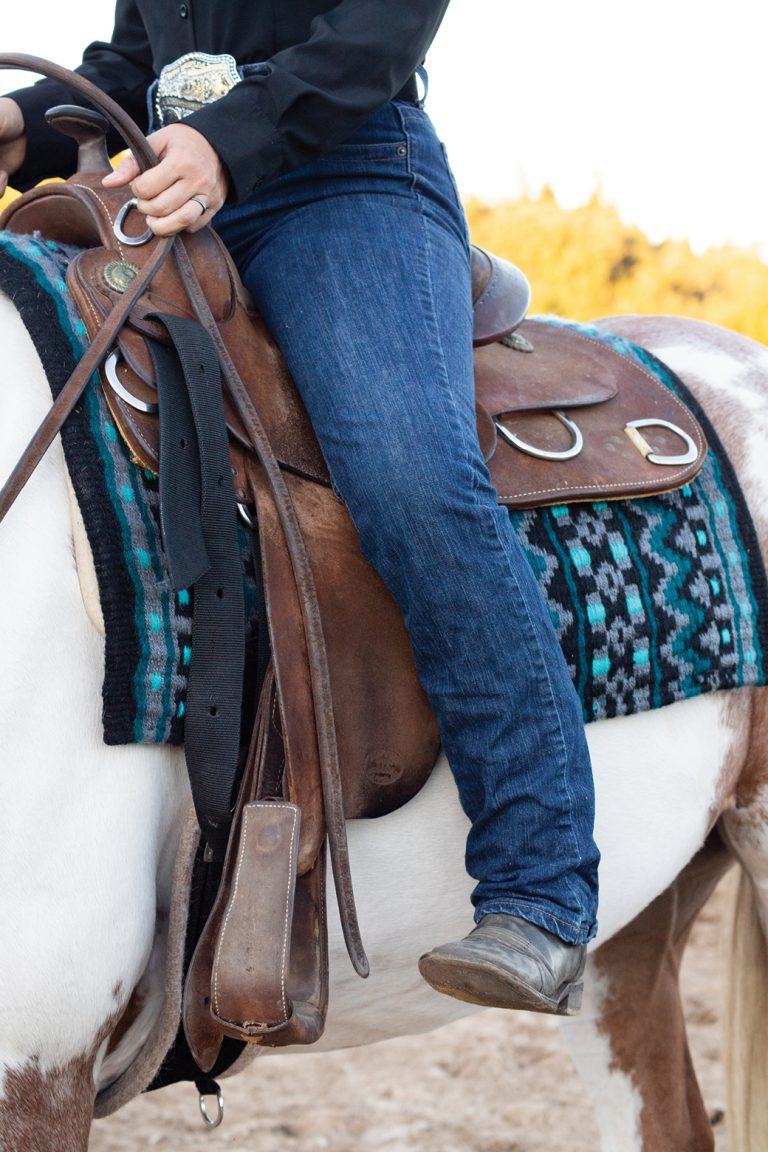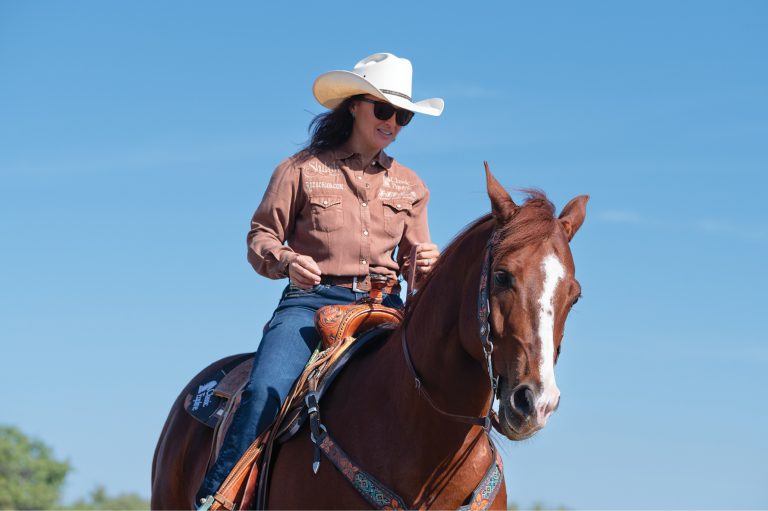While you might think practicing your spin is close enough, the two maneuvers are quite different from each other. A reining spin has more forward motion, while the rollback—by definition—is a 180-degree reversal of forward motion completed by running to a stop, rolling your horse’s shoulders back to the opposite direction over the hocks, and departing into a lope in one continuous motion. Whether you’re just teaching your horse or trying to tune him up, anticipating this maneuver can get you in as much trouble as not performing a proper rollback can, so avoid over-schooling this maneuver in one session.
[MORE WITH TREVOR: STOP YOUR SPIN ACCURATELY]
One
To begin, use a bridle your horse responds well to. If your horse is new to rollbacks, I recommend being two-handed in a snaffle bit. The horse I’m riding just needs a tune-up, so I’m riding in a bridle I commonly ride him in but have gone to two hands, giving me the ability to guide his body a little more. Since I want my horse to be rocked back on his haunches, I start by backing my horse in a straight line.
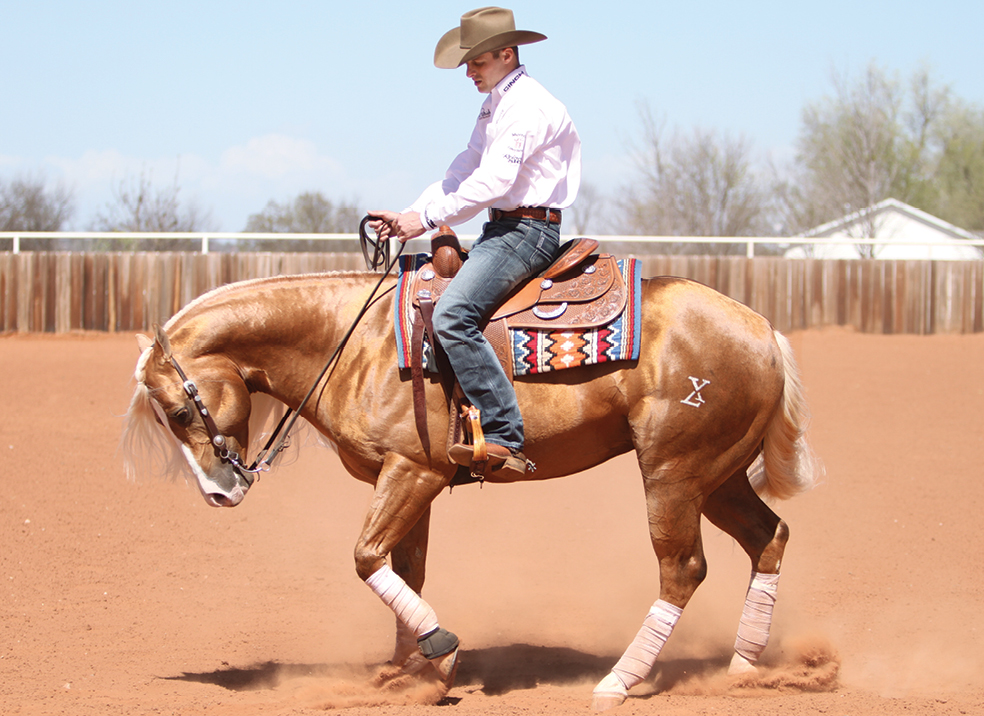
Two
When my horse wants to back with fluid motion and stay soft in his face and neck, I increase the difficulty by asking him to back a tight circle to the right. I use my left leg to push my horse’s hip around to the right, and I keep his head slightly to the left to help him soften up. Since we’re schooling for the left rollback, he’ll need his head turned in that direction when it’s time to turn. I’ll continue backing this circle until we have a steady rhythm.

Three
Once I’m consistent going to the right, I switch directions and ask my horse to back a circle to the left. Because you’re required to perform rollbacks going both directions in a reining class, you need to work each direction until your horse wants to stay soft in the bridle. Now that I’m backing to the left, I use my right leg to push my horse’s hip around, and I keep his head slightly to the right, because that’s the direction he needs to be when it comes time to perform a right rollback. If your horse is green, it’s not uncommon to work on backing circles each direction for several sessions before adding the rollback. You can’t have a solid rollback if your horse is rigid in his face and stiff in his body. He also needs to be comfortable moving his body around each direction.
[MORE WITH TREVOR: SPEED TRANSITIONS]
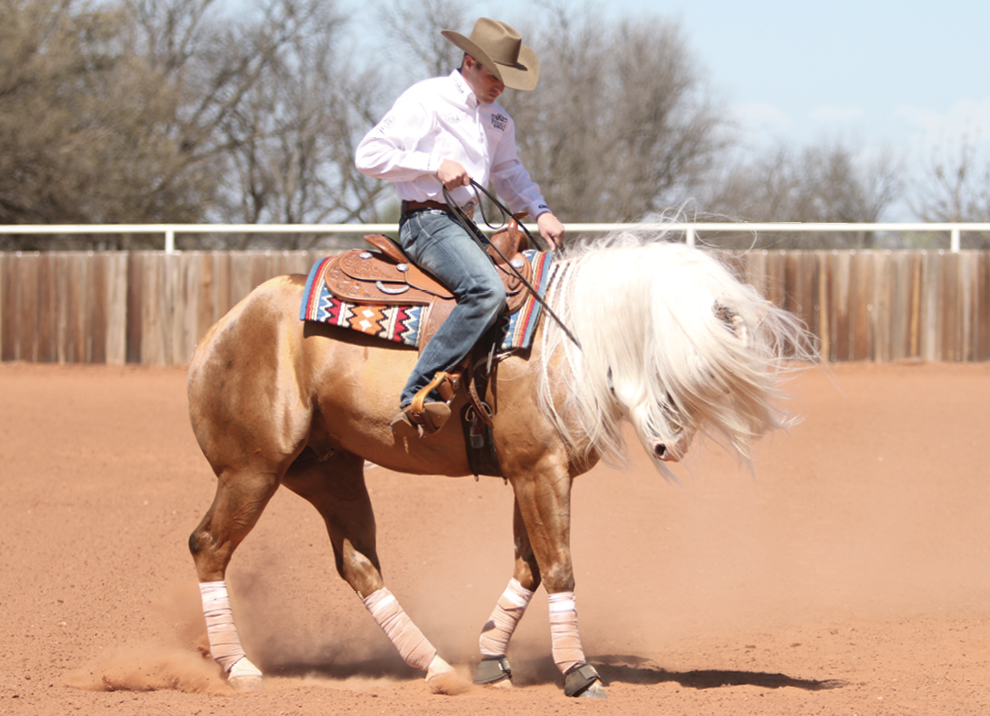
Four
Now that my horse is comfortable backing, I start to incorporate the actual rollback into my training. I stay two-handed in my bridle, find a straight line, and ask my horse to lope off on the left lead. When my horse wants to stay straight in his body and listen to my cue, I ask him to stop. I make it a point to stop in different parts of the arena, and not the area that we would normally rollback in the class, so that he doesn’t begin to anticipate.

Five
After my horse stops, I back him up in a straight line for a few steps before asking him to roll back to the right so I can ensure that he’s sitting back on his haunches and thinking about my hand and leg cues. Because I’m asking him to roll back to the right, I have my right hand higher than my left, asking my horse to soften to the right. Eventually, I’ll ask him to perform a right rollback, but until then, I’m not allowing his body to go in either direction.
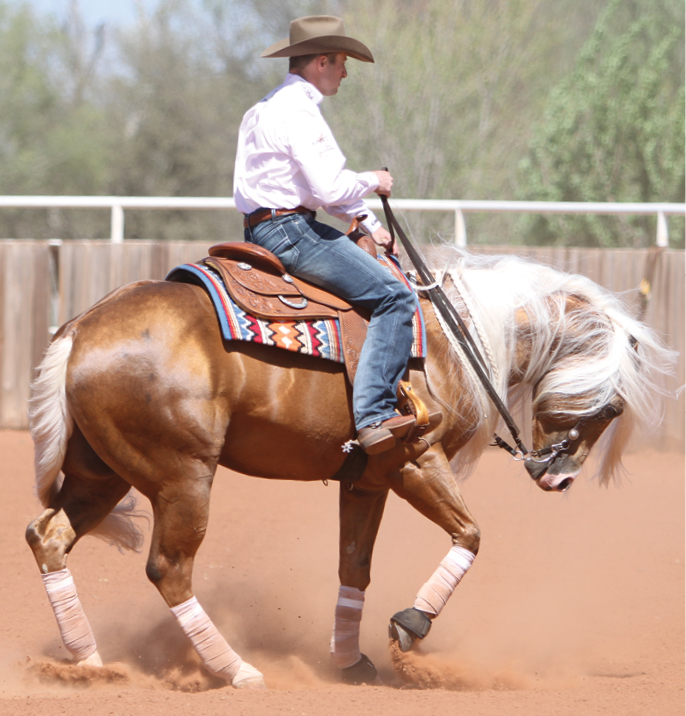
Six
When I’m ready to cue for the actual rollback, I keep my right hand back to help guide my horse’s nose and bring my left rein across his neck to encourage him to neck rein. I push with my outside (left) leg to guide him around the rollback, and I release my inside (right) foot so he knows it’s time to come through.
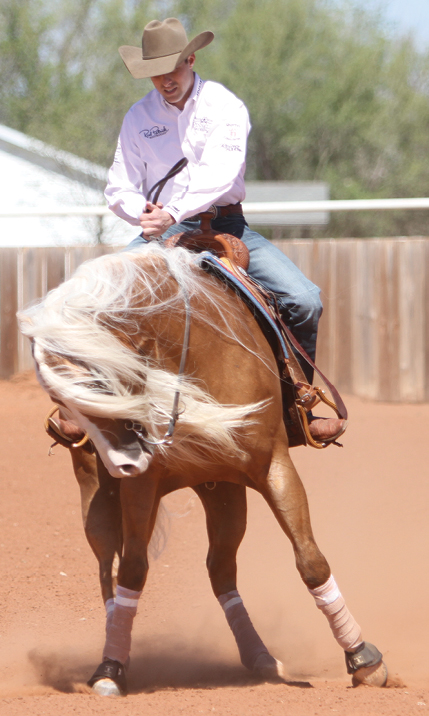
Seven
As we complete the 180-degree rollback and my horse is back over his tracks, I move my hands forward to let him leave the rollback and push him into the right lead. While in reining it’s OK to leave the rollback on either lead, as long as you get changed to the correct lead before the end of the arena, being able to depart on the correct lead is often smoother, and you’re more likely to get loped off straight, which leads to a better overall maneuver.
Once I complete my rollback, I ride my horse straight for a few strides before asking him to stop again. I’ll then perform this same exercise the opposite direction until my horse is soft rolling back both ways.
[READ: MORE ABOUT ROLLBACKS]
